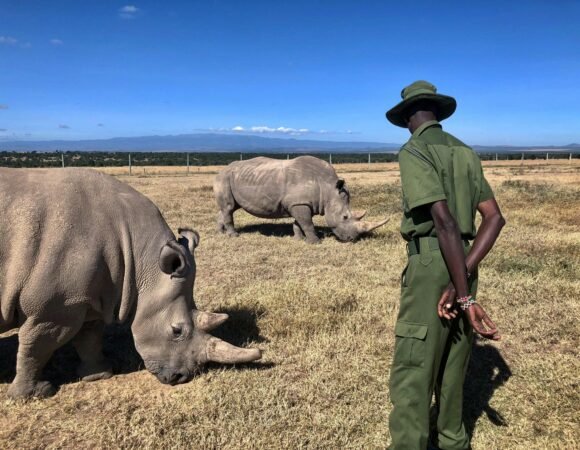
Samburu National Reserve
Hidden in the rugged landscapes of northern Kenya, Samburu National Reserve is a breathtaking wildlife haven that offers a unique safari experience. Unlike the more famous reserves in southern Kenya, Samburu is known for its remote wilderness, rare wildlife species, and rich Samburu culture. The reserve lies along the banks of the Ewaso Nyiro River, which sustains an incredible diversity of wildlife amid the arid landscapes. With its dramatic scenery, abundant wildlife, and fewer crowds, Samburu is a perfect destination for authentic and off-the-beaten-path safari adventures.
Wildlife and Unique Species
Samburu National Reserve is a sanctuary for some of Africa’s most fascinating wildlife. Unlike other parks, it is home to the Samburu Special Five, which includes the Grevy’s zebra, reticulated giraffe, beisa oryx, gerenuk, and Somali ostrich. These rare species have adapted to the harsh, semi-arid conditions of northern Kenya, making them a unique attraction for wildlife enthusiasts.
Apart from these special species, the reserve is rich in big game, including elephants, lions, leopards, cheetahs, and buffaloes. The Ewaso Nyiro River, the lifeline of the reserve, attracts large herds of elephants that gather to drink and bathe. Big cats are also frequently spotted, with leopards often seen draped over tree branches, lions resting under the shade, and cheetahs hunting in the open plains.
The riverbanks also support hippos and crocodiles, while bird lovers can spot more than 450 species of birds, including the vibrant vulturine guineafowl, kingfishers, hornbills, and birds of prey such as eagles and vultures.
Scenery
Samburu’s landscape is a stunning mix of open savannahs, rugged hills, rocky outcrops, and riverine forests. The golden grasslands stretch far and wide, interrupted by the towering Koitogor and Ololokwe hills, which create a dramatic backdrop. The Ewaso Nyiro River snakes through the reserve, its banks lined with tall doum palms that provide shade and a striking contrast against the dry plains.
The park's arid conditions create a unique atmosphere, where the red-hued soil and endless horizons give a sense of untouched wilderness. During sunrise and sunset, the landscape is bathed in golden light, creating breathtaking views and picture-perfect moments for photographers and nature lovers alike.
Activities
Visitors to Samburu have a range of activities to immerse themselves in the park’s beauty. Game drives are the most popular, with early morning and late afternoon excursions offering the best chances of spotting predators and other wildlife. The relatively open terrain makes it easier to track animals, making for a thrilling safari experience.
For a more intimate encounter with nature, guided nature walks allow visitors to explore the landscape on foot, observing smaller creatures, learning about native plants, and understanding the ecosystem in more detail. Birdwatching is another rewarding activity, with migratory and resident birds filling the skies and riverbanks with life.
Cultural visits to nearby Samburu villages provide an opportunity to interact with the Samburu people, a semi-nomadic community closely related to the Maasai. Visitors can witness traditional dances, learn about their customs, and understand how they have coexisted with wildlife for centuries.
Weather & Climate
Samburu has a hot and dry climate for most of the year, with daytime temperatures ranging between 28°C – 35°C (82°F – 95°F). Nights are cooler, averaging between 15°C – 20°C (59°F – 68°F).
Rainfall is minimal, but the short rains occur in November, while the long rains come between April and May. These showers transform the landscape, making it greener and more scenic, but can also make some areas inaccessible due to muddy conditions.
Best Time to Visit
The best time to visit Samburu National Reserve is during the dry seasons, from June to October and December to March. During this period, animals gather around the Ewaso Nyiro River, making wildlife sightings more frequent and predictable. The dry conditions also mean that game drives are smoother, and roads are easily navigable.
For birdwatchers, the rainy seasons offer a chance to see migratory birds and lush landscapes, though access to some parts of the reserve may be challenging.
A Must-Visit Safari Destination
Samburu National Reserve offers a wild, untouched safari experience with rare wildlife, breathtaking scenery, and deep cultural heritage. Whether you're watching elephants by the river, spotting a leopard resting in a tree, or engaging with the Samburu people, every moment in this remarkable reserve feels like a step into Africa’s true wilderness.
Adventure Awaits, Let’s Explore!



